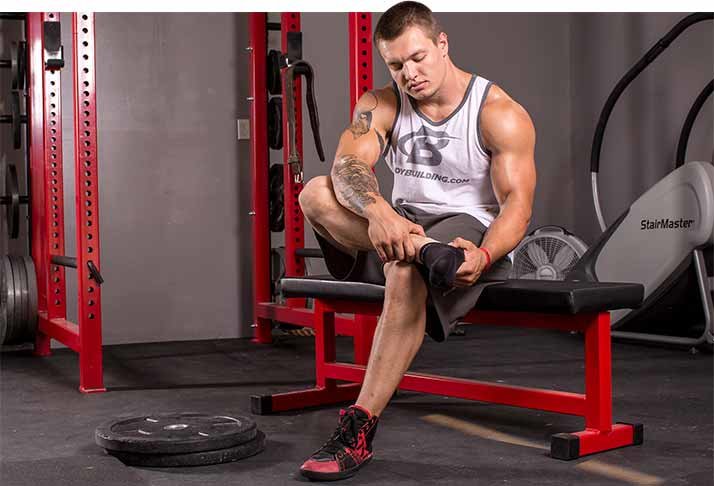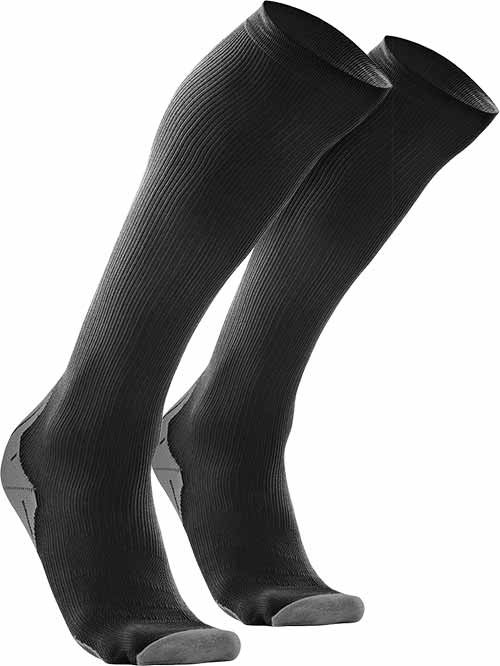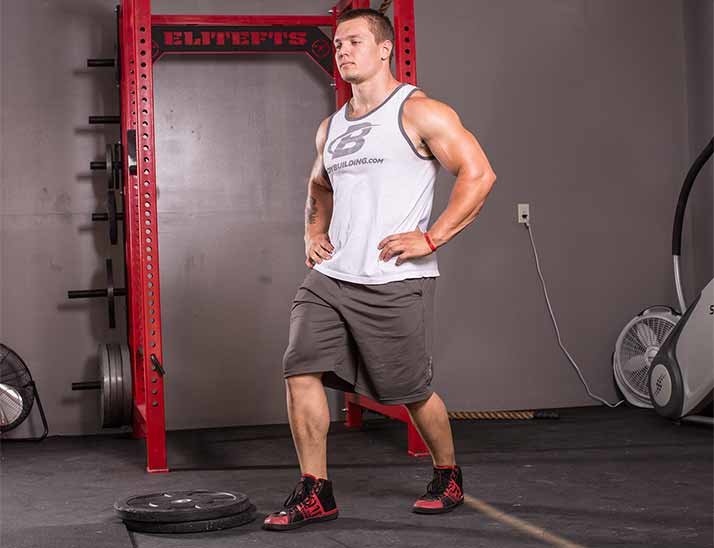
Heal Your Heels: Plantar Fasciitis Treatment
Inflammation of the heel can afflict athletes of all stripes, including runners and lifters. Here's how to treat plantar fasciitis so you can get back on your feet!
You're only as strong as your weakest link, and for athletes who are on their feet all day, that weak link could well be exacerbated by standing. Heel pain is a relatively common phenomenon among runners, workers who stand all day long, women who often wear high heels, obese individuals, and many others. And while you may not fit into any of these groups, it doesn't mean you're immune from a condition called plantar fasciitis.
In one study, there was a significant correlation between a patient's body weight and the occurrence of plantar heel pain.1 Since lifters often carry more body weight than the average person because of the amount of muscle we carry, we may be susceptible to plantar heel pain if we're not careful.
Plantar fasciitis, the most common cause of plantar heel pain, is typically a result of pain and inflammation along the thick band of tissue on the bottom part of the foot (the plantar fascia) that connects the heel to the toes and supports the longitudinal arch of the foot.2
Pain is most noticeable in the morning, and can feel like a sharp poke in your heel the second you put your foot down on the floor. The pain is usually the sharpest along the inside part of your heel and may reach the entire bottom of your foot. Although the pain generally improves after a few minutes of walking, it may persist throughout the day.
Strain to the plantar fascia is usually caused by a biomechanical imbalance resulting in tension along the area.3 Some of the biomechanical causes include a tight gastrocnemius/soleus (calf), structural foot problems like flat feet or hindfoot valgus, hypo-mobile joints, or weak muscles further up the kinetic chain such as the gluteus maximus or gluteus medius that indirectly create unnecessary tension in the plantar fascia.

Faulty footwear and excessive "impact" cardiovascular exercise like brisk walking (especially downhill) or running without letting your body acclimate or recover between exercise sessions can also contribute to the condition.
According to a long-term follow-up study, investigators found that 80 percent of patients treated conservatively for plantar fasciitis had complete resolution of pain after four years.4 Check out these conservative treatment options so you can get back on your feet.
Conservative Treatment Options
Foot Orthotics
If you have structural problems in your feet—flat feet, high arches, or hindfoot valgus—orthotics can help support your feet and potentially relieve foot problems or other orthopedic ailments related to poor foot structure. Research has indicated that both custom orthotics and generic orthotics can effectively relieve pain.5

Plantar Fascia Compression Sleeves
If you type "plantar fasciitis" in a search engine, chances are you'll find an advertisement for these compression "socks." While there's currently no medical literature to support these sleeves, the low cost and their noninvasive approach might make it worth a try. The principle behind these socks is to provide compression and support to the plantar fascia, which in theory may reduce pain.
Pain Killers (Ibuprofen, Sodium Naproxide)
These medicines, taken in a prescription-grade dosage from your physician, can help alleviate the inflammation present with the plantar fascia condition.
Night Splints
These splints provide a gentle, prolonged stretch to the plantar fascia, Achilles tendon, and gastrocnemius while you sleep.
Corticosteroid Injections
These injections contain medicine that helps reduce inflammation and a local pain medication to immediately relieve the pain. It's important to note that while this may relieve the pain in the short term, the original cause of the problem must still be addressed or the symptoms will persist. Some conflicting research has shown there may be a correlation between corticosteroid injections and weakening of the plantar fascia, which may possibly lead to future ruptures of the tendon.
Rehabilitation
Rehabilitation can include modalities such as electrical stimulation, ultrasound, extracorporeal shockwave therapy, low-level laser, and ice. Manual therapy techniques like joint and soft-tissue mobilization, fitting for custom orthotics, and therapeutic exercise to address flexibility and strength imbalances may also be implemented.
Heal Your Heels
Although all of these conservative treatments are viable options, complete rest, ice, and stretching for 7-21 days will often help relieve the pain on its own. For some users, even wearing a second pair of socks has provided some relief so long as your feet still fit comfortably in your footwear.
Stretching the Achilles tendon and the muscles that make up your calf (gastrocnemius and soleus) are critical parts to treating plantar fasciitis. A study on the effects of the duration and frequency of Achilles tendon stretching on dorsiflexion and outcome in painful heel syndrome found that "both sustained and intermittent Achilles tendon stretching exercises increase Achilles tendon flexibility and that this increase in flexibility correlated with a decrease in pain."6 The authors concluded that both sustained and intermittent Achilles tendon stretching were effective, nonsurgical treatments for painful-heel syndrome.

It's important to use proper technique when stretching the calves. A recent study in the Journal of Strength and Conditioning concluded that "consideration should be given to the hindfoot position when performing dorsiflexion stretches to prevent mid-foot injury and ensure a direct stretch of the triceps surae muscle."7
In other words, the correct stretching position is for the heel bone to be in a neutral position where the midline of the heel bone is directly underneath the tibia (shin bone) and not pointing toward the outside of the foot. It is best to perform the stretch barefoot to ensure that your heel bone is in the right position.
Some final advice to deal with this condition is to avoid "impact" cardio such as running or walking (especially downhill) and ensure you have proper footwear that supports your feet. If the pain persists after several weeks, it's always wise to consult a podiatrist, physician, certified athletic trainer, or physical therapist to help you implement other treatment options.
References
- Hill, J. J., & Cutting, P. J. (1989). Heel pain and body weight. Foot & Ankle International, 9(5), 254-256.
- Neufeld, S. K., & Cerrato, R. (2008). Plantar fasciitis: evaluation and treatment. Journal of the American Academy of Orthopaedic Surgeons, 16(6), 338-346.
- Barrett, S. J., & O'Malley, R. (1999). Plantar fasciitis and other causes of heel pain. American Family Physician, 59(8), 2200-2206.
- Wolgin, M., Cook, C., Graham, C., & Mauldin, D. (1994). Conservative treatment of plantar heel pain: long-term follow-up. Foot & Ankle International, 15(3), 97-102.
- Ferber, R., & Hettinga, B. A. (2015). A comparison of different over-the-counter foot orthotic devices on multi-segment foot biomechanics. Prosthetics and Orthotics International, 0309364615584660.
- Porter, D., Barrill, E., Oneacre, K., & May, B. D. (2002). The effects of duration and frequency of Achilles tendon stretching on dorsiflexion and outcome in painful heel syndrome: a randomized, blinded, control study. Foot & Ankle International, 23(7), 619-624.
- Russ, B. S., & Olivencia, O. (2015). Considerations for Improving Triceps Surae Flexibility. Strength & Conditioning Journal, 37(3), 70-73.
